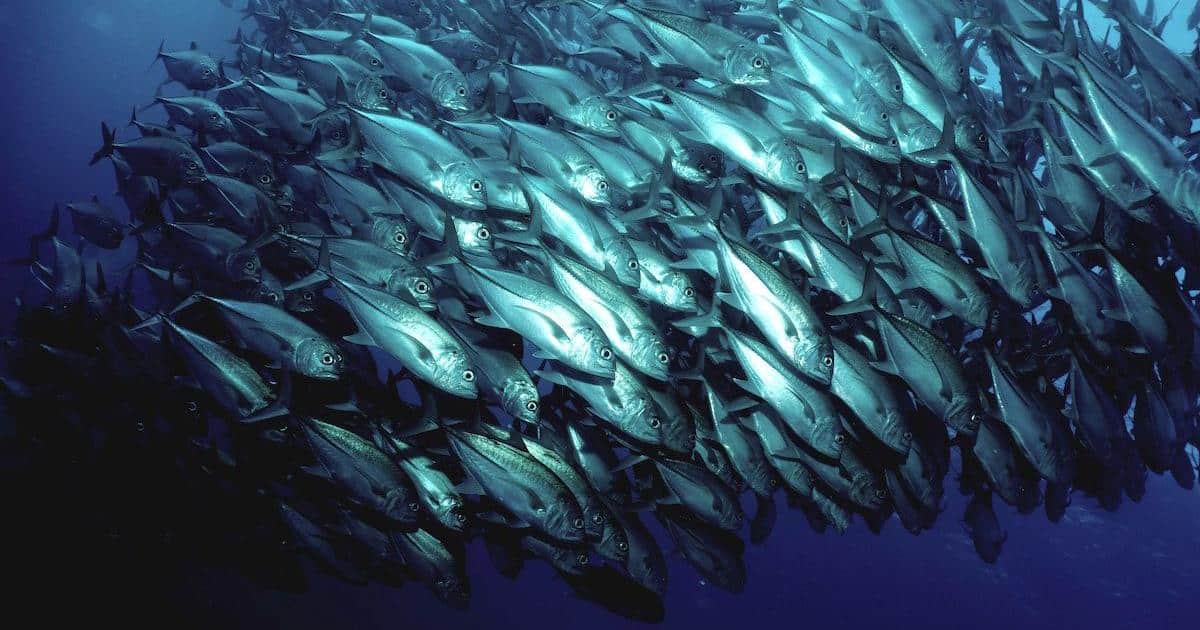Multiple agreements have been signed by Pacific island countries and territories to maintain the sustainability of this important ocean resource. However, the advent of Fish Aggregating Devices (FADs) and their impact on fishing efficiency over the past 20 years has added a large unknown to the management required to maintain the sustainability of this key fishery into the future.
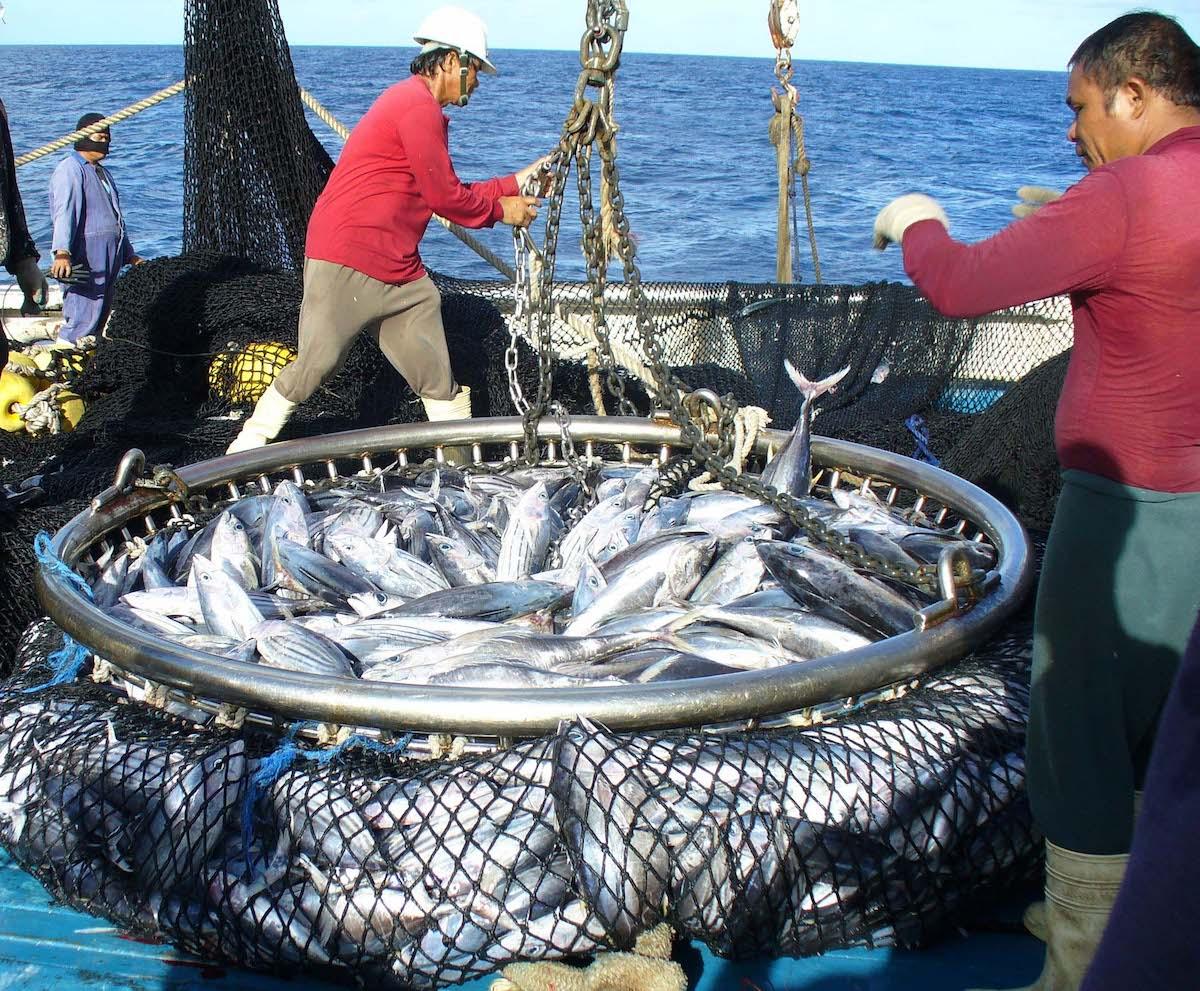 Brailing of tuna onboard vessel Dolores, 2008. Credit: Siosifa Fukofuka (SPC)
Brailing of tuna onboard vessel Dolores, 2008. Credit: Siosifa Fukofuka (SPC)
Researchers from The Pacific Community’s Oceanic Fisheries Program (SPC) and the ARC Centre of Excellence for Climate Extremes have recently published two papers that used a combination of records from captains and scientific observers, FAD tracking data, ocean models and cutting edge simulation methods to reveal for the first time the trajectories and potential impact these FADs may have on fisheries and the island nations.
“Around 30,000-65,000 FADs are released every year in this region but we have very little understanding of where they ended up, how they are being used, and the impact this has had on coastal areas and the overall catch of the fishery,” said Dr Lauriane Escalle, a fisheries scientist at SPC.
“While we know FADs make fishing more efficient, allowing fishing vessels to use less fuel and reduce fishing effort, there are unanswered questions around potential overfishing, impacts on bycatch species, ghost fishing and reef damage caused by FADs washing up on coral reefs and islands.”
Aside from catch data and ocean models, modern FADs themselves played an important role in helping the researchers get their answers.
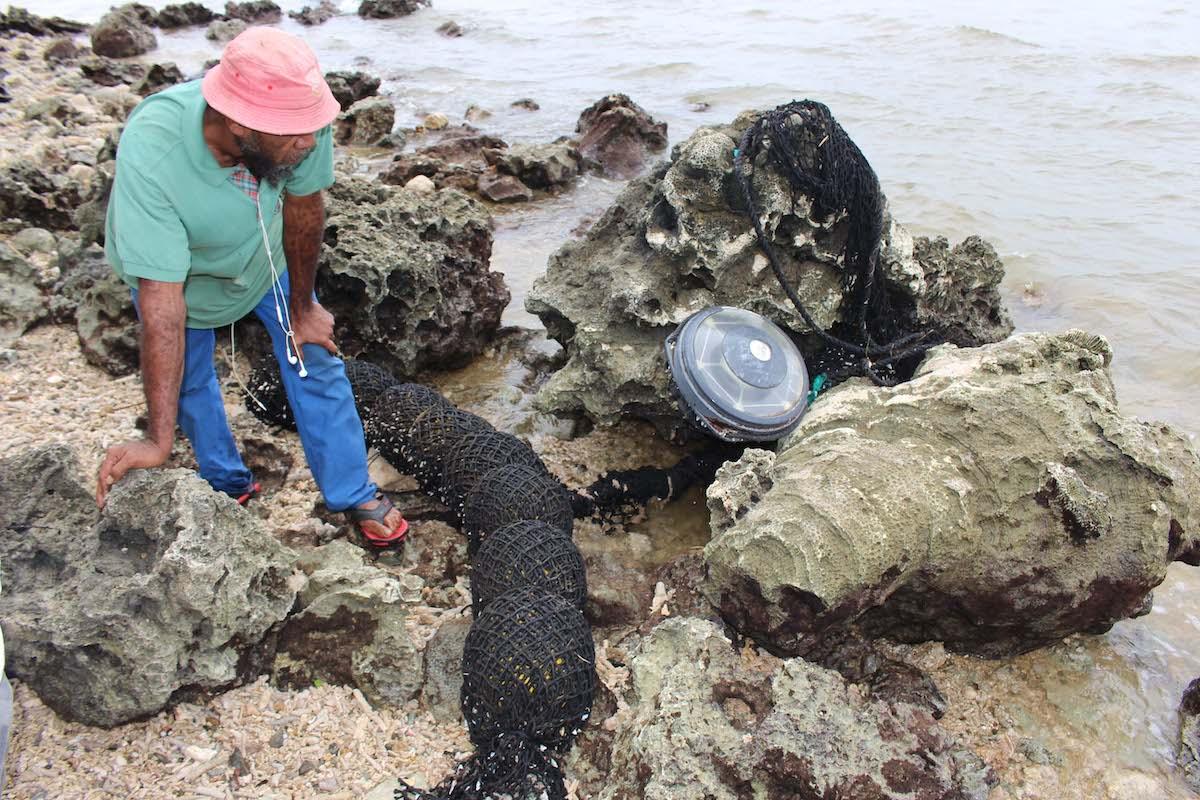 FAD found beached in Touhou New Caledonia. Credit: A Durbano, Association Hô-üt’
FAD found beached in Touhou New Caledonia. Credit: A Durbano, Association Hô-üt’
Traditional FADs work because ocean-going species, like tuna, tend to aggregate around floating objects like floating logs. Why they do this is still not fully understood but fishers have long known this fact and taken advantage by releasing bamboo rafts into the ocean — the world’s first FADs. Over time commercial fishers added old ropes and nets to slow the drift through the ocean.
Today, FADs are high-tech buoys with solar-powered devices that record the position, scan the ocean below to estimate the number of aggregated fish and transmit all this information to vessels via satellite. This technology opened the door to detailed observations of FAD life history while they drift across the Pacific.
Combining this real-world information with catch data and cutting-edge simulations based on ocean models allowed the researchers to examine the dynamics of FAD connectivity and to test different hypotheses explaining the high number of FADs beaching incidents in some areas. This key information could significantly add to the management of the Western and Central Pacific Ocean tuna fishery and the exclusive economic zones within it.
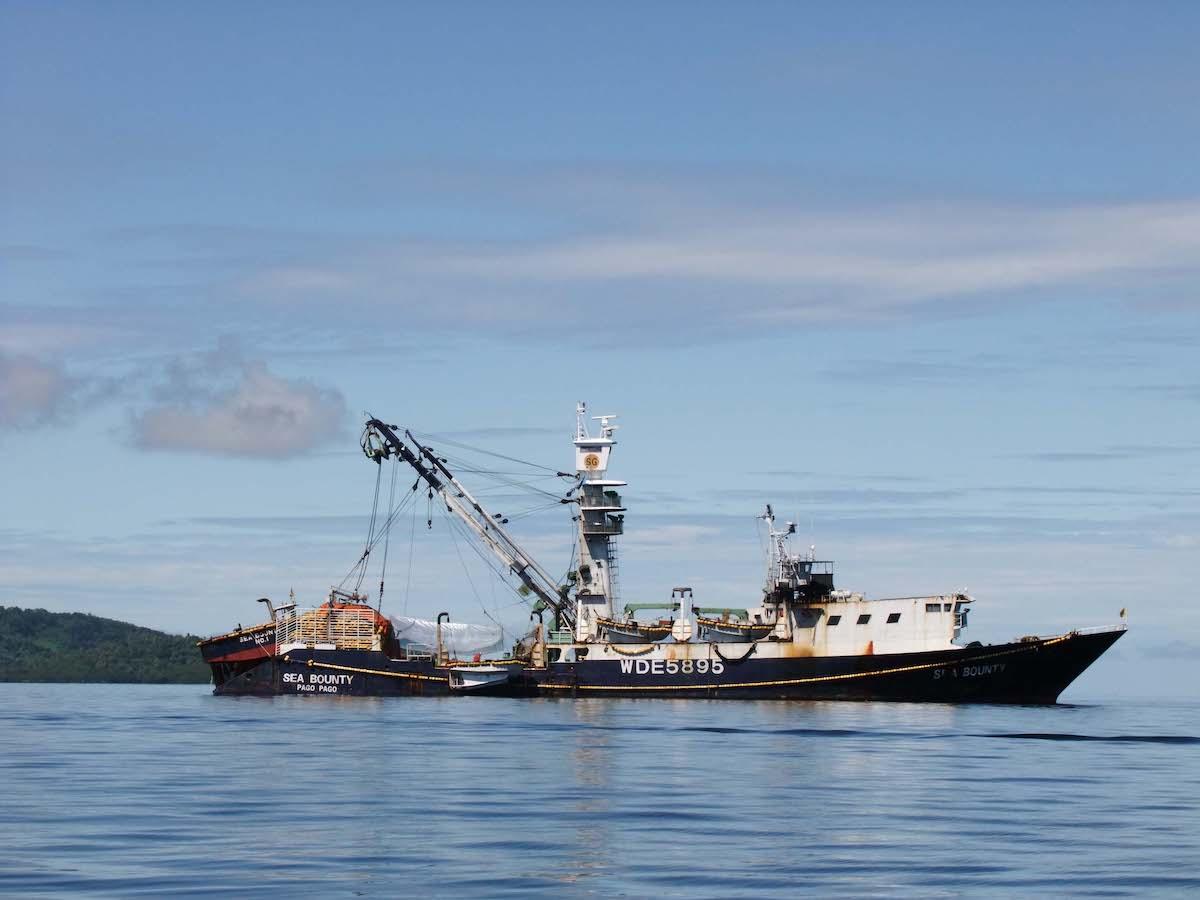 Purse seine vessel Sea Bounty in Pohnpei (Federated States of Micronesia), 2019. Credit: Lauriane Escalle (SPC)
Purse seine vessel Sea Bounty in Pohnpei (Federated States of Micronesia), 2019. Credit: Lauriane Escalle (SPC)
The studies found that:
- More than 2000 FADs wash up on beaches and coral reefs every year.
- Up to 6000 FADs fished on in the WCPO had drifted in from another fishery in the Eastern Pacific Ocean, which has different management systems;
- FADs spent more time in the exclusive economic zone of Tuvalu and the Solomon Islands than any other part of the fishery.
- The highest number of FAD beaching events occurred in the Solomon Islands, Papua New Guinea and Tuvalu. This was more the result of ocean currents than where the FADs were deployed, making the management of this issue more difficult.
- Kiribati, located along the equator, experienced a high number of FADs drifting through their waters, alongside significant levels of beaching, as a result of where fishers deployed FADs.
- Results from these studies will help effectively manage tuna resources, through measures on the number and location of FADs deployments; the use of biodegradable FADs; programs to recover lost FAD before reaching sensitive areas; and more research on FAD impact on tuna and bycatch populations.
“Access to this unique regional database of FAD tracking data by fishing companies and managers allowed us to not only validate ocean models but also to test different deployment hypotheses using millions of virtual FADs,” said Dr Joe Scutt Phillips, another fisheries scientist at SPC.
“This method allows us to look back in time and make good estimates of the movement and impact of FADs from before tracking programs, as well as examine their potential impact on tuna behaviour.
“This collaboration between fishing companies, regional management organisations and researchers has resulted in an extraordinary amount of useful data that will go a long way towards helping Pacific island nations and the fisheries managers maintain the sustainability of this valuable $6 billion a year industry. It’s a great example of managers, industry and researchers working together for the benefit of all.”
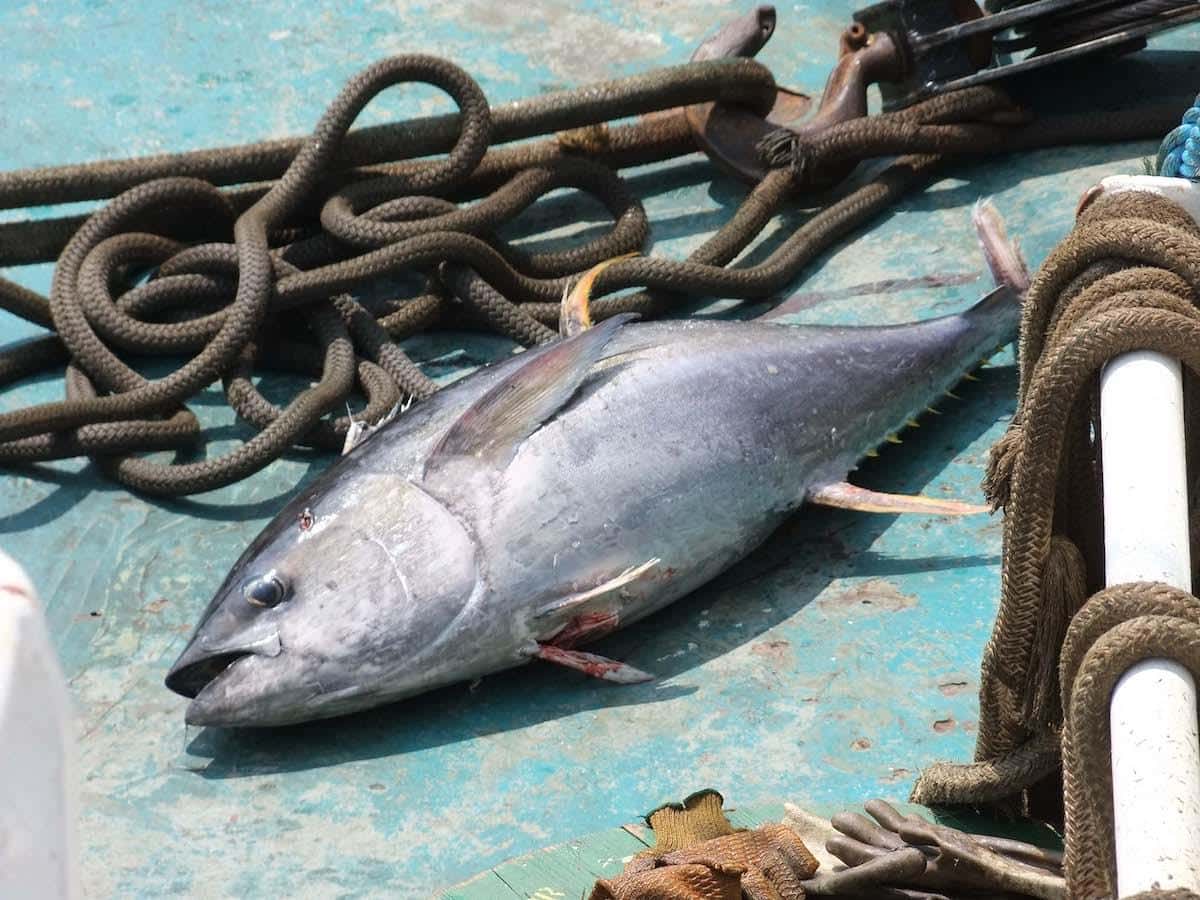 Yellowfin tuna captured on a purse seine, 2014. Credit: Lauriane Escalle
Yellowfin tuna captured on a purse seine, 2014. Credit: Lauriane Escalle
Story by Alvin Stone, University of New South Wales
Journal References:
Lauriane Escalle, Joe Scutt Phillips, Maurice Brownjohn, Stephen Brouwer, Alex Sen Gupta, Erik Van Sebille, John Hampton, Graham Pilling. Environmental versus operational drivers of drifting FAD beaching in the Western and Central Pacific Ocean. Scientific Reports, 2019; 9 (1) DOI: 10.1038/s41598-019-50364-0
J Scutt Phillips, L Escalle, G Pilling, A Sen Gupta, E van Sebille. Regional connectivity and spatial densities of drifting fish aggregating devices, simulated from fishing events in the Western and Central Pacific Ocean. Environmental Research Communications, 2019; 1 (5): 055001 DOI: 10.1088/2515-7620/ab21e9
